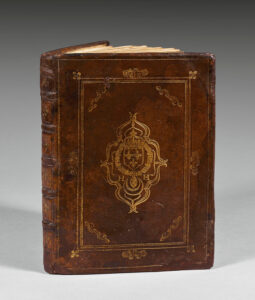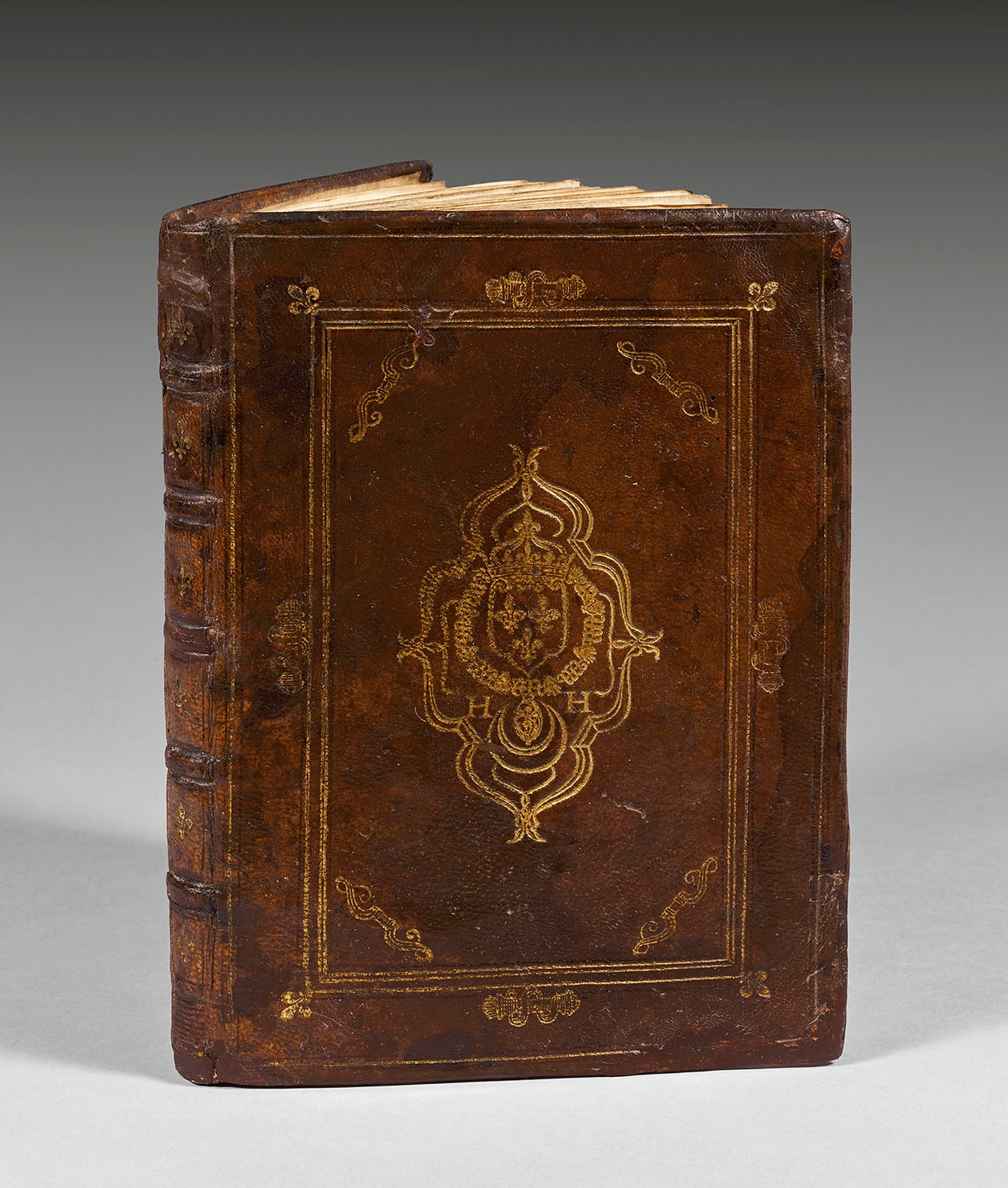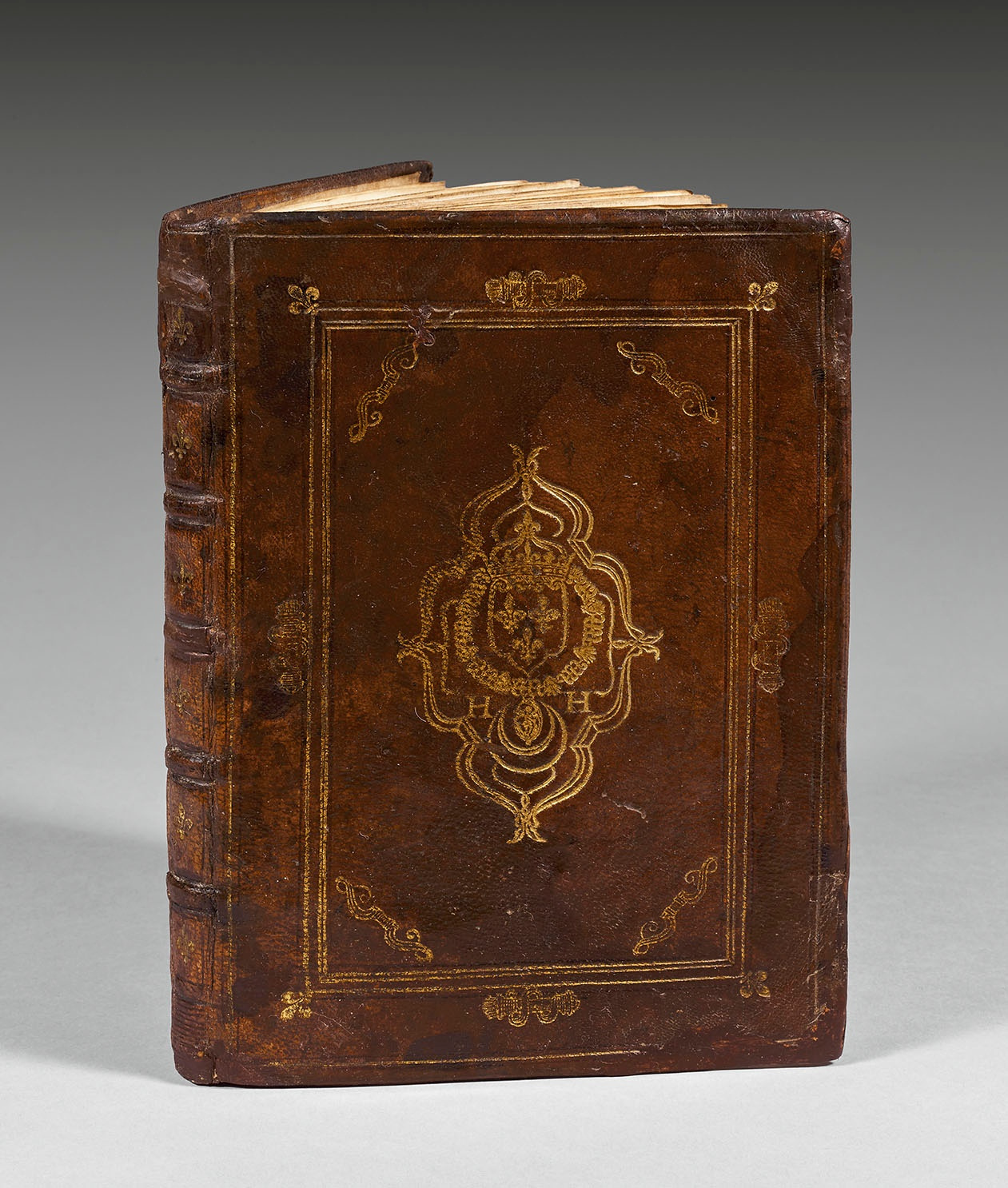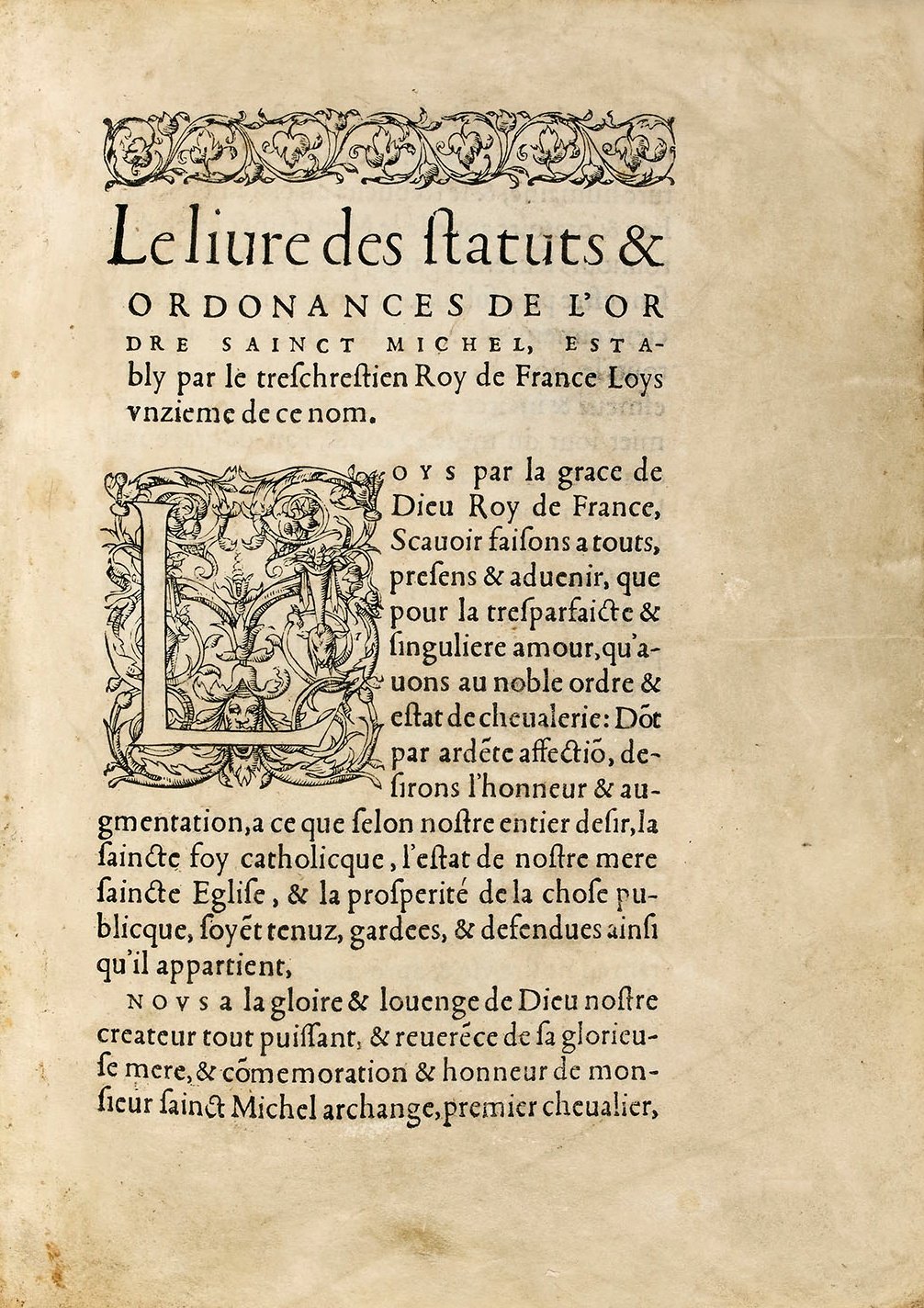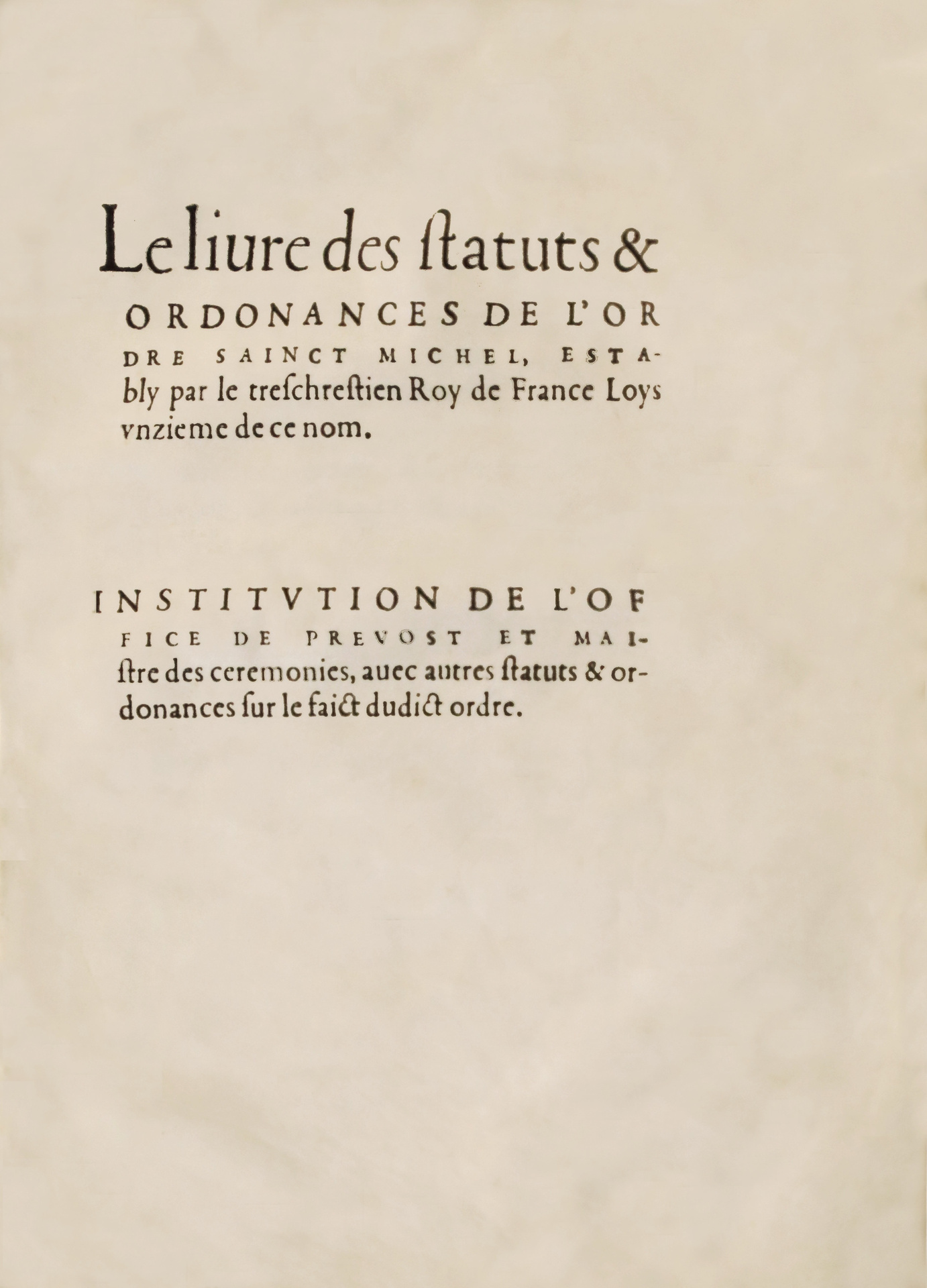The struggle with Charles v:
In an attempt to gather the nobility with the monarchy and more importantly to fight against the appeal of the Order of the Golden Fleece founded by the Burgundian Dukes, Louis XI founded the French Order of Saint Michael, enacted its 66 rules at Plessis-lez-Tours during his meeting in Péronne, on August 1, 1469, with Charles the Bold and created then 36 knights. After the death of the Bold, in 1477, Louis XI, having annexed Burgundy, Picardy and Artois, supplemented those statutes and enacted them again. The Order was taking over the Middle Ages military and chivalry orders relayed by those coming from the Crusades. This net of legal, social, political, financial and so on instructions, was inextricably binding the knights to the royal figure. This is here one of the first manifestations of the monarchy’s all power.
François I undertook to give a renewed vigour to the Order of Saint Michael after the defeat of Pavia. This publication hereby makes clear the intention of King Henri II, after the death in 1547 of François I and after his own accession, to triumphantly lead the fight against Charles V.
Beautiful printing in round letters decorated with large on bright-field gilt letters.
Copy printed on vellum skin, intended for one of the Order’s dignitaries.
The statement established by Van Praet (Catalogue des livres imprimés sur vélin de la Bibliothèque du Roi, v 121-123 et vi, 138 et 171), lists around twenty copies printed on vellum skin, two of which are preserved at the B.n.F. and twelve of which we lost trace of. Mirjam M. Foot lists fifteen bearing their original binding.
Binding from the royal bookbinder’s workshop, with the arms of Henri II accompanied by the symbols of Diana the Huntress. Those dedication copies, meant to be offered by the King to the thirty-six knights of the Order, were bound in the royal bookbinding workshop of Fontainebleau, which was ran by Gomar Estienne, and then, around 1559, by Claude de Picques.
The two patterns tools, the bow and the quiver, appeared in the vocabulary of the royal bookbinder’s workshop in 1549 (see M.-P. Laffitte and F. Le Bars, Reliures royales de la Renaissance : la Librairie de Fontainebleau 1544-1570, 1999, p. 180, n° 90). An identical binding on the same work is preserved at the Austrian National Library, in Vienna described and featured in O. Mazal Europäische Einbandkunst 1970, n°123. A few other copies are also bound with the arms of Henri II, with alternatives in the emblems of Diane layout. Van Praet points out the B.n.F. storage’s copy (but bound in calf and not in morocco), the McCarthy’s one (cat. I, p. 197, n° 1239) and two copies in the possession, of the De Bure in 1803. The catalogue Gumuchian, XII, n°38, describes a copy in calf, where the hints at Diane are limited only to the crescent moon in the arms of the King, neither the bow neither the quiver appear in the decoration; the catalogue of Whitney’s collection (Hoff, I n° 61, pl. 30), is featuring another one in morocco, with the bows and quivers laid-out conversely from the present copy, quivers inside, bows outside the framing, layout that can also be seen on the copy in morocco from the Biblioteca Casanatense in Rome given by Henri II to Giordano Orsini in 1557 in Saint-Germain-en-Laye, on the same day the latter was received in the Order (see Piccarda Quilici, Legature antiche e di pregio [della Biblioteca Casanatense], 1995, n° 340 and fig. 151). As for Selden’s copy from the Bodleian Library, also in morocco, it shows an alternation of bows and quivers on the inner angles of the core panel as well as on its edges (featured in the catalogue from the exhibition Fine Bindings 1500-1700 from Oxford Libraries, Bodleian Library, 1968, n° 36, pl. ix).
References: Saffroy, I, n° 6230 ; Brunet, III, 1125 ; Van Praet, V, n° 141-142 and Supplément, n°141 ; Foot, I, 182 and III, 96-97 ; A. Parent-Charron « Nouveaux documents sur les relieurs parisiens du xviè siècle », Revue française d’histoire du livre, vol. 36, 1982, pp. 389-408 ; Librairie Pierre Berès, Cat. n° 93 : Six siècles de reliures, 2004, n° 51 ; Hobson & Culot, n° 42.
